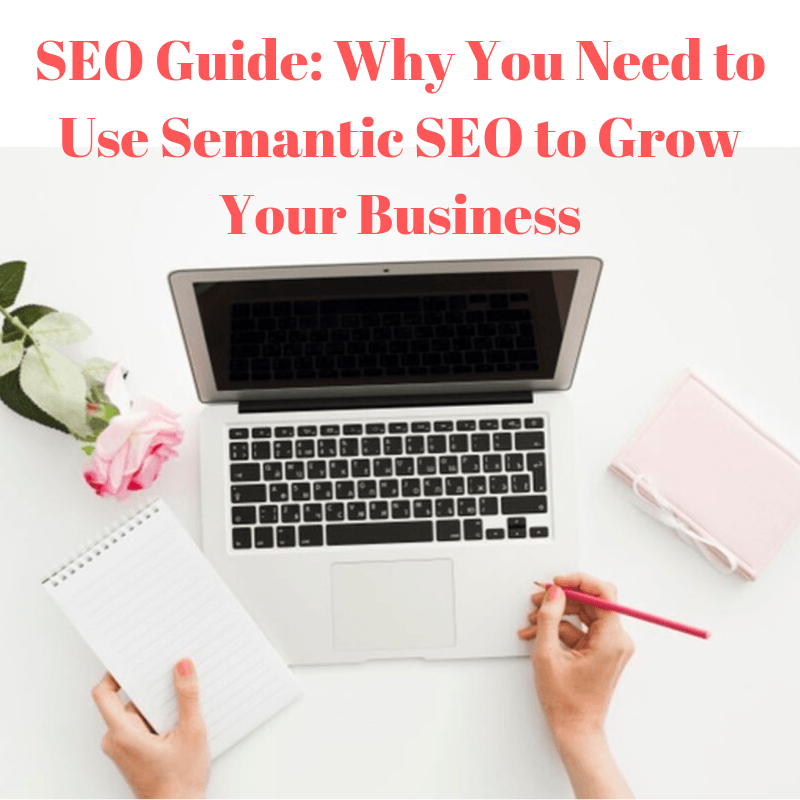
Search strategies change as quickly as consumer interests. Surfing the web is evolving to include semantic search. Marketers are beginning to use semantic SEO when they create content. The user’s experience and content is the king, semantic SEO strategies focus on whether a reader can find answers to their questions. A very important tip for your business.
Semantic SEO means you need to optimize your content by focusing on the meaning behind the query. What is the visitor asking? Content should focus more on an overall topic rather than one specific question.
Attention! Semantic SEO takes content one step further by proactively addressing additional questions your visitor might have. Google wants to direct users to web pages that offer them in-depth, valuable information.
Content that is filled with relevant and natural language is attractive to Google.
Algorithms and Artificial Intelligence (AI)
Today’s computer scientists are pushing to advance tomorrow’s technology into the domain of artificial intelligence, or AI. Elements of it are already in use. Why AI is a very important tool for your business.
Facebook feed
Chatbots
Netflix
Tesla electronic cars
Siri and Alexa
Connected words and phrases employed in semantic SEO searches are linked with the AI movement, which does, after all, depend on algorithms. Google’s search processes have always moved toward natural conversation, so semantic SEO is the natural progression.
It is about providing interactive experiences for users and predicting user intent.
Google’s Hummingbird algorithm recognizes the connection of keywords to each other and ranks web sites based on their relevance to search queries.
Hummingbird is a game-changer in that it almost demands more semantically driven SEO strategies. There are ways you can use new language-driven SEO strategies to increase your rankings and possibly even boost your sales.
Keywords – The New Way
Change the way you think about your keywords in the new semantic search area. Try to incorporate LSI keywords, or latent semantic index-based words, from three different levels into your content, with each level performing a specific task.
Level One—Core words that are quite similar to initial target keywords
Level Two—Theme words that, while not synonyms to target and core words, have related concepts
Level Three—Stem words that answer questions of users after they locate your page, such as “finding affordable Vermont homes” instead of “affordable Vermont homes.”
These three levels work together in targeted keyword searches to help users not only find what they want but also to deliver relevant content that answers related to user questions.
You need to focus on semantically connected keywords and phrases. A keyword planner from Google AdWords may help you.
Structure and Natural Sound
Structure your sentences carefully. Use the Subject Predicate Object format.
Language must sound natural, so read what you write out loud. While long-form content is great, keep your copy direct and concise so search engines and readers can understand your content easily.
Organize Data
Don’t forget the value of schema markup. Organize data on your web pages using elements such as tagging and marking to help search engines read or crawl your pages.
Your content marketing strategy must incorporate relevant words as well as information that is easily understood and accessed to rank higher in search results.
Social Media
Social media is very important for your online searches and SEO strategy. With Google’s Hummingbird, social networks take on even more important in terms of personalization and search results pages.
Noticing not only the words used in social searches but also the essence of the search parameters is an essential aspect of incorporating semantic SEO into your overall marketing strategy.
SEO experts recommend that you pay attention to consumers’ social searches and incorporate their interests into the content you share on your social networks. This natural link will organically draw potential customers to you.
Thanks to Google’s Hummingbird algorithm, semantic SEO is here. Today’s marketing strategies require close attention to details and to what users are searching for, but semantic searches go beyond this.
You must also understand and anticipate what users will be asking and answer those questions using layers of carefully devised keywords and value-added content.
Natural, semantically driven language is taking searches to another level. If you optimize your content strategies to keep up, your search rankings could rise dramatically as well.
Make your research and find the latest trends in SEO and Google algorithms. The online world, search engines, and technology are changing pretty fast. So, it’s very important to know how to create a successful SEO strategy for your business.
P.S.
FREE TRAINING: How to Make Money Online https://www.bestprofitsonline.com/myblog/
“How to Earn a 6-Figure Side-Income Online”
Free Training Series Reveals Everything, Step-by-Step http://bit.ly/2XFoEIV